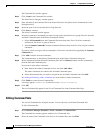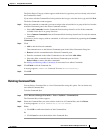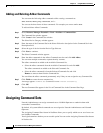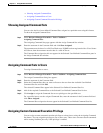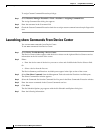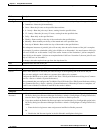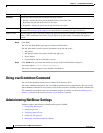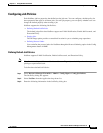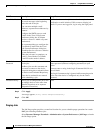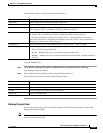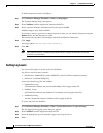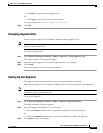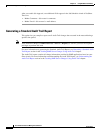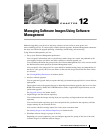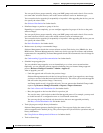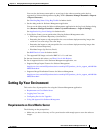
11-28
User Guide for Resource Manager Essentials 4.1
OL-11714-01
Chapter 11 Using NetShow Commands
Administering NetShow Settings
Step 4 Click Apply.
A message appears, Policy values changed successfully.
Step 5 Click OK.
Purging Jobs
The Job Purge option provides a centralized location for you to schedule purge operations for certain
RME jobs including NetShow jobs.
Select Resource Manager Essentials > Administration > System Preferences > Job Purge to invoke
the Job Purge option.
Field Name Description Usage Notes
E-mail Notification Enter the e-mail addresses to which the
job sends messages at the beginning
and at the end of the job.
You can enter multiple e-mail
addresses; separate these addresses by
commas.
Configure the SMTP server to send
e-mails in the View / Edit System
Preferences dialog box (Common
Services > Server > Admin > System
Preferences).
We recommend that you configure the
CiscoWorks E-mail ID in the View /
Edit System Preferences dialog box
(Common Services > Server > Admin >
System Preferences).
When the job starts or completes, an
e-mail is sent with the CiscoWorks
E-mail ID as the sender's address.
Notification is sent when job is started and completed.
Notification e-mails include a URL to enter to display job
details. If you are not logged in, log in using the login panel.
Enable Job
Password
The Job Password Policy is enabled for
all the jobs.
NetShow jobs use this username and
password to connect to the device,
instead of taking these credentials from
the Device and Credential Repository.
These device credentials are entered
while scheduling a job.
You can use this option even if you have configured only the
Telnet password (without configuring username) on your
device.
You must enter a string in the Login Username field. Do not
leave it blank.
The Login Username string is ignored while connecting to the
device since the device is configured only for the Telnet
password.
Execution Policy Allows you to configure the job to run
on multiple devices at the same time
(Parallel Execution) or in sequence
(Sequential Execution).
None.



